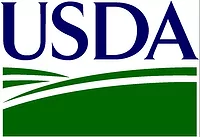Preparing for food inspections 24/7
Get more peace of mind with these three steps

When a food safety auditor steps into your plant, it’s common to feel nervous, especially if it’s unexpected. You have several priorities to juggle—production, employee retention, streamlining your processes and saving on costs. Even if you’ve increased your attention to safety and sanitation, you still might find yourself second-guessing. Have you been meeting the requirements? Is everything documented properly?
With the right daily processes in place, you can be better prepared for those inspections—and feel more confident that you’ll not only pass them, but that you’re preventing foodborne illness in your products.
Here are a few ways to get started.
- Designate a food safety manager
Having an anchor person for your food safety program is crucial for ensuring standards are consistently met. While food safety is an important part of every employee’s role at your plant, designating a food safety manager helps streamline the process and makes sure the required food safety steps are taken. That person can establish and improve the program, perform spot checks, verify that the titrations of chemicals are in line with what your Hazard Analysis and Critical Control Points (HACPP) or other program suggests and add another level of accountability to your team.
- Document, document, document
Although documentation is arguably the most important step of food safety beyond the practices themselves, it’s often rushed—or worse, skipped entirely. In the face of labor challenges, it can be hard to prioritize documentation, but it’s critical to meet inspection standards—if documentation hasn’t been completed, it can be assumed the action wasn’t taken. HAACP programs, for example, have prerequisites and validation steps, all requiring documentation, which ensures every step was taken at critical points of action. A food safety manager can make sure the action steps were taken and documented.
- Consider automation
Food safety and sanitation equipment is becoming more sophisticated, featuring automatic tracking, traceability and documentation. That means you can start to shift some documentation responsibilities away from your employees. Automated equipment can record chemicals and track processes for review by plant managers, saving time on documentation and removing human error. It’s another way of ensuring you’re ready for a food safety inspection.
Make it a holistic effort
While designating a food safety manager, adopting a HAACP program, or taking other initiatives help prepare your plant for inspection, ultimately, an effective food safety program takes a team effort. In the end, appropriately training employees on your food safety program, reminding them of the purpose of their work—protecting the food chain—and building food safety into your workplace culture are the best steps you can take.
Looking for quick answers on food safety topics?
Try Ask FSM, our new smart AI search tool.
Ask FSM →







